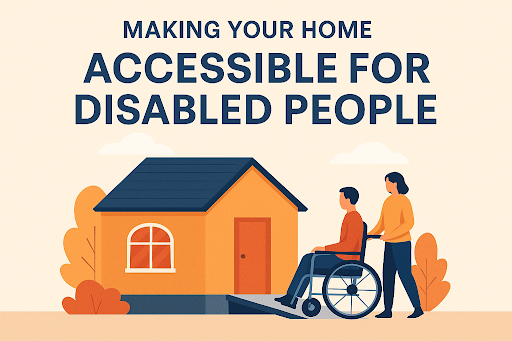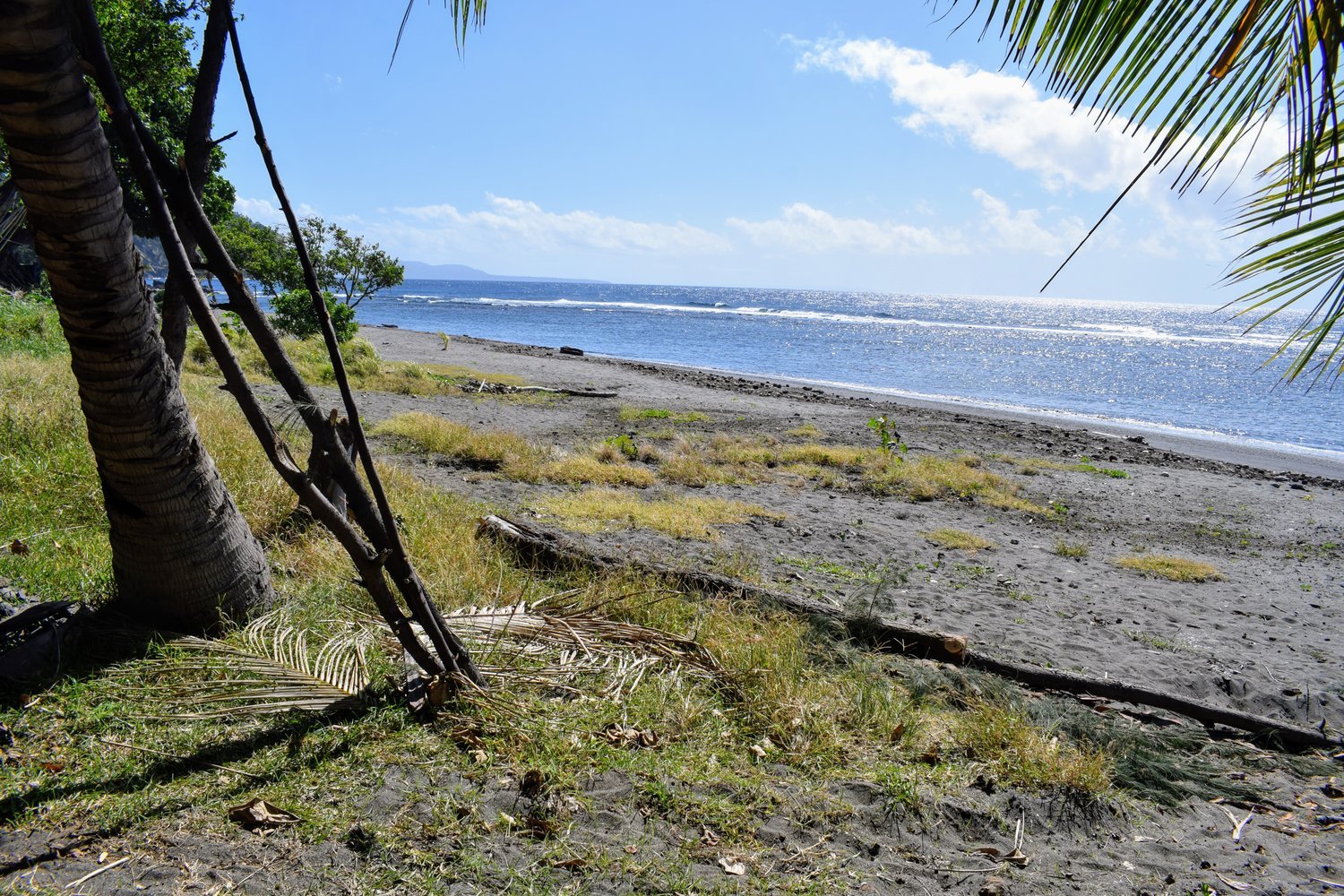Lifestyle
What to Ask Before Booking a Beard Transplant

Facial hair plays a key role in the appearance and self-image of many men. For some, a full beard is a symbol of masculinity, style, and maturity. However, not every man is genetically blessed with thick, even facial hair. This is where a beard transplant in Sydney comes into play.
If you’ve been considering the procedure to enhance your beard or correct patchy facial hair, there are important questions you should ask before committing to treatment. Choosing the right Sydney hair clinic and understanding what to expect will ensure you achieve natural-looking results and a smooth experience.
What Is a Beard Transplant?
A beard transplant is a type of facial hair restoration that involves taking hair follicles from a donor area—usually the back or sides of the scalp—and implanting them into areas of the face where facial hair is thin or absent. This procedure is performed under local anaesthesia and can take several hours, depending on the size of the area being treated.
There are two main techniques used in beard transplants:
- FUE (Follicular Unit Extraction): Individual follicles are harvested and implanted with precision.
- FUT (Follicular Unit Transplantation): A strip of skin is removed and dissected into grafts, though this method is less commonly used for facial hair today.
Why Consider a Beard Transplant?

A beard transplant may be the right choice for men who:
- Have patchy or uneven beard growth
- Have facial scars preventing hair growth in certain areas
- Want to redefine their beard shape or density
- Experience beard hair loss due to genetics or trauma
For those seeking lasting results, a beard transplant in Sydney offers a permanent solution, providing the transplanted hair is well cared for post-procedure.
Important Questions to Ask Before Booking
Before you go ahead with a beard transplant, it’s vital to gather as much information as possible from your chosen Sydney hair clinic. Here are key questions to ask during your consultation:
Is a Beard Transplant Right for Me?
Not everyone is an ideal candidate. Ask whether your facial hair loss is best treated with a transplant or if alternative treatments might be more effective. The doctor will assess your skin condition, hair type, and facial structure to determine suitability.
What Technique Will Be Used?
Most modern beard transplants use FUE for its minimally invasive nature and natural-looking results. Ensure your clinic is experienced in FUE, and ask how many procedures they’ve performed. Understanding the method used will also help you prepare for recovery.
How Many Grafts Will I Need?
The number of grafts you need depends on the size of the area being treated and your desired beard density. A light goatee may require 500–800 grafts, while a full beard can need 2,000 or more. Knowing this helps you understand the time and cost involved.
Where Will the Donor Hair Come From?
Typically, the donor hair is taken from the back of the scalp, where hair is thickest and most resistant to thinning. Ask your surgeon how they ensure that donor hair will match your facial hair in texture and appearance.
What Is the Cost of a Beard Transplant in Sydney?
Costs vary between clinics, depending on the number of grafts, surgeon experience, and clinic reputation. While affordability is important, avoid choosing based on price alone. A reputable Sydney hair clinic will provide transparent pricing and discuss payment plans if needed.
What Are the Risks and Side Effects?
As with any medical procedure, beard transplants carry risks. Common side effects include redness, swelling, scabbing, and temporary shedding of transplanted hairs. Serious complications are rare when performed by a skilled practitioner. Ask your clinic how they handle post-surgery care and complications.
What Should I Expect During Recovery?
Recovery is usually straightforward, but you’ll need to follow aftercare instructions closely. It may take a few days to resume normal activities and several months for full results to appear. Ask for a recovery timeline and what you can do to minimise discomfort.
Will I Need More Than One Session?
Most beard transplants are completed in one session, but touch-ups may be needed for perfect density or symmetry. During your consultation, your specialist should let you know whether a second session may be required.
Choosing the Right Sydney Hair Clinic

When searching for a Sydney hair clinic, look for one that specialises in both scalp and facial hair restoration. Here’s what to consider:
- Experience: How long have they been performing beard transplants?
- Before-and-After Photos: Ask to see previous cases similar to yours.
- Patient Reviews: Check online testimonials to gauge satisfaction levels.
- Credentials: Ensure the clinic is staffed by qualified medical professionals and operates in a licensed facility.
A reputable clinic will welcome your questions and provide detailed explanations at every stage of the process.
What to Expect After the Procedure
Post-transplant, you may experience minor swelling, redness, or small scabs where the grafts were placed. This is completely normal and typically resolves within a week. It’s essential not to shave the area or touch the scabs during the initial healing period.
Transplanted hairs usually fall out after 2–3 weeks—a normal part of the process known as “shock loss.” New, permanent hairs begin to grow in the following months. Full results may take up to a year to be visible.
Your clinic should schedule follow-up appointments to monitor progress and ensure optimal outcomes.
A beard transplant in Sydney is a highly personalised procedure that can dramatically improve the appearance of your facial hair and boost self-confidence. Whether you’re looking to fill in patches, restore hair in scarred areas, or craft a fuller, more defined beard, the key to a successful result lies in asking the right questions.
Take your time to find a qualified, experienced Sydney hair clinic, and don’t hesitate to ask about techniques, recovery, and expected outcomes. A well-informed decision is the first step toward achieving the beard you’ve always wanted.
Lifestyle
CJMonsoon: Inspiring Authenticity, Mental Well-being & Passion

Welcome to the vibrant world of CJMonsoon, where authenticity reigns supreme and mental well-being takes center stage. In an age filled with curated social media images and filtered realities, it’s refreshing to discover a platform that celebrates being genuine. Here, we dive deep into the heart of what it means to be true to oneself while fostering a strong sense of community.
CJMonsoon isn’t just a brand; it’s a movement. A unique blend of inspiration and empowerment awaits you as we explore how this initiative is reshaping lives by encouraging individuals to embrace their true selves. Get ready for an enlightening journey that champions mental health awareness and ignites passion in every aspect of life!
The Journey of Authenticity
The journey of authenticity is deeply personal. It often begins with self-discovery, a quest to understand who you really are beyond societal expectations.
Many people wear masks to fit in. They suppress their true selves out of fear or insecurity. This is where the struggle lies—between conformity and individuality.
Embracing authenticity requires courage. It means confronting your fears and acknowledging your unique traits. Each step taken toward being genuine strengthens your confidence.
You may face criticism along the way, but that shouldn’t deter you. Authenticity attracts like-minded individuals who appreciate your truth.
Finding comfort in vulnerability can be liberating too. Sharing your story can inspire others on their own paths to self-acceptance.
This journey isn’t about perfection; it’s about progress and growing into the person you were always meant to be.
The Importance of Mental Well-being
Mental well-being is the foundation of a fulfilling life. It shapes our thoughts, emotions, and actions daily. A healthy mind promotes resilience against life’s challenges.
When we prioritize mental health, we open ourselves to better relationships and greater creativity. Stress management and emotional balance foster an environment where we can thrive.
Engaging in self-care activities—like meditation or journaling—can enhance our mood significantly. These simple practices help center us amidst chaos.
Moreover, seeking support when needed is crucial. Talking to friends or professionals can provide fresh perspectives and reduce feelings of isolation.
Understanding that mental well-being is just as vital as physical health encourages a holistic approach to personal growth. Embracing this concept enables individuals to lead lives rich with purpose and joy.
Finding and Pursuing Your Passion
Finding your passion is like embarking on a treasure hunt. It requires exploration and a willingness to step outside your comfort zone.
Start by reflecting on what excites you. Think about the activities that make time fly. What brings you joy?
Experimentation is key. Try new hobbies, volunteer for different causes, or take up classes that intrigue you. Each experience can unveil hidden interests.
Listen to yourself as well. Your intuition often knows where your heart lies before your mind does.
Once you’ve identified something that resonates, pursue it relentlessly. Dedicate time and energy to nurture this newfound love.
Connect with others who share similar passions; their support can propel you forward. Surrounding yourself with enthusiastic people will inspire growth and creativity.
Remember, it’s not just about success but also enjoying the journey of discovery along the way.
Tips for Staying True to Yourself
Staying true to yourself can be a journey. It begins with self-reflection. Take time to understand your values and what makes you unique.
Surround yourself with supportive people who encourage authenticity. Friends and mentors can inspire you to stay aligned with your true self.
Practice mindfulness. Being present helps you connect with your thoughts and feelings, making it easier to recognize when you’re straying from who you are.
Set boundaries that protect your energy. Saying “no” is essential; it allows space for genuine opportunities that resonate with you.
Embrace imperfections and celebrate small victories along the way. Growth happens in moments of vulnerability.
Write down affirmations or goals that remind you of your essence. Regularly revisiting these can strengthen your commitment to being authentic every day.
CJMonsoon’s Impact on the Community
CJMonsoon has become a beacon of hope for many. Through various initiatives, the platform encourages individuals to embrace their true selves.
Community workshops have provided safe spaces for open dialogue. Here, people share stories and experiences that foster connection and understanding.
Online platforms amplify voices often unheard. CJMonsoon utilizes social media to spread messages of empowerment and inclusivity, reaching audiences far beyond local boundaries.
Collaborations with mental health organizations further enhance its mission. By partnering with professionals, CJMonsoon offers vital resources that promote well-being.
The ripple effect is undeniable. As participants find courage in authenticity, they inspire others to embark on similar journeys.
This community spirit cultivates resilience and support among members, creating an environment where everyone feels valued and heard.
Conclusion: Embracing Authenticity, Mental Well-being, and Passion with CJMonsoon
CJMonsoon embodies a powerful message of living authentically, prioritizing mental well-being, and pursuing passion with vigor. It’s more than just a brand; it represents a movement that encourages individuals to embrace their true selves without fear.
Through the journey of authenticity, CJMonsoon inspires others to shed societal expectations and find strength in vulnerability. Mental well-being is emphasized as essential for personal growth and happiness. By encouraging open conversations about mental health, CJMonsoon fosters an environment where everyone feels heard and understood.
Pursuing passions can sometimes feel daunting. However, CJMonsoon serves as a beacon of inspiration, reminding us that our interests can lead to fulfilling paths if we commit wholeheartedly. The guidance provided helps many navigate their journeys toward finding what truly makes them come alive.
Tips shared through this platform motivate individuals to stay true to themselves amidst life’s challenges. Whether it’s through self-reflection or connecting with like-minded communities, the emphasis on authenticity resonates deeply within all who engage with the content.
The impact on the community has been profound. People are uniting around these values—creating networks built on support and understanding while sharing stories that uplift one another.
Embracing authenticity alongside mental well-being leads not only to individual fulfillment but also strengthens collective resilience in society. With CJMonsoon at the forefront of this cultural shift, there’s hope for brighter days ahead for those willing to embark on this transformative journey together.
Lifestyle
SosoActive: Energize Your Life, Elevate Your Performance

Are you ready to supercharge your life? In a world that constantly demands more from us, staying active is crucial. Whether it’s for physical health or mental clarity, being active can significantly enhance our daily lives. Enter SosoActive—a game-changing solution designed to help you energize your lifestyle and elevate your performance. If you’re looking for a way to boost both your productivity and well-being, keep reading. Discover how SosoActive can transform not just the way you move but also how you tackle each day!
The Importance of Being Active
Staying active is more than just a trend; it’s essential for overall well-being. Regular movement fuels the body and mind, promoting better health outcomes.
Physical activity reduces the risk of chronic diseases like heart disease and diabetes. It keeps your muscles strong and joints flexible, allowing you to enjoy life without restrictions.
Mental health also reaps rewards from an active lifestyle. Exercise releases endorphins, the body’s natural mood lifters. This can reduce stress levels and combat anxiety.
Moreover, being active enhances cognitive functions such as memory and focus. Whether you’re hitting the gym or enjoying a brisk walk in nature, each step contributes to sharper thinking.
Engaging in physical activities fosters social connections too. Group workouts or team sports build friendships while motivating you to stay on track with your fitness goals.
What is SosoActive?
SosoActive is not just another fitness trend; it’s a lifestyle revolution. Designed for those who want to infuse energy into their daily lives, SosoActive combines innovative technology with practical exercises.
At its core, SosoActive focuses on making activity enjoyable and accessible. It transitions seamlessly from a workout tool to an everyday companion that encourages movement at every opportunity.
With features tailored for all fitness levels, it promotes engagement without the intimidation often associated with traditional exercise programs. Whether you’re a busy professional or a stay-at-home parent, SosoActive adapts to your unique routine.
The community surrounding SosoActive enhances the experience even further. Users share tips, success stories and motivation—all designed to make staying active feel less like a chore and more like an adventure. Discovering what makes your body thrive has never been easier or more exciting than with SosoActive by your side.
Features and Benefits of SosoActive
SosoActive stands out with its dynamic design and user-friendly interface. It’s crafted to fit seamlessly into your lifestyle, making physical activity accessible for everyone.
One of its key features is the customizable workout plans tailored to individual fitness levels. Whether you’re a beginner or an athlete, SosoActive meets you where you are.
The app also offers real-time tracking of your performance metrics. This helps users monitor their progress effectively, providing motivation along the way.
Another highlight is the community aspect. Users can connect with others for support and encouragement, fostering a sense of belonging in their health journey.
Additionally, SosoActive incorporates gamification elements that make workouts fun and engaging. You earn rewards as you complete challenges, turning exercise into an enjoyable part of your day rather than a chore.
How to Incorporate SosoActive into Your Daily Routine
Integrating SosoActive into your daily life is simple and rewarding. Start by setting aside a specific time each day for your SosoActive sessions. This could be in the morning to kickstart your energy or during lunch as a refreshing break.
Consider pairing SosoActive with existing routines, like using it while watching TV or listening to music. It blends seamlessly into any environment, making movement enjoyable rather than chore-like.
Try short bursts of activity throughout the day. A few minutes of stretching or light exercises can elevate your mood and productivity levels significantly.
Invite friends or family members to join you with SosoActive. Shared experiences not only boost motivation but also make staying active more fun and engaging.
Don’t forget to track your progress! Keeping a journal can help you understand how incorporating SosoActive changes your energy levels and overall performance over time.
Success Stories from SosoActive Users
Many individuals have transformed their lives with SosoActive. Take Sarah, for instance. She struggled to maintain her energy throughout the day while balancing work and family commitments. After integrating SosoActive into her routine, she noticed a remarkable boost in stamina and focus.
Then there’s Mike, an avid runner who aimed to improve his performance. He discovered that using SosoActive not only enhanced his endurance but also expedited recovery times after intense training sessions.
Jessica shared how SosoActive helped her break free from gym intimidation. With the app’s guided workouts, she built confidence and found joy in staying active rather than viewing it as a chore.
These stories reveal just a glimpse of what SosoActive can achieve for people from all walks of life. Real users continue to share their journeys, inspiring others to take charge of their health through movement and motivation.
Alternative Ways to Stay Active
Staying active doesn’t always mean hitting the gym. There are countless alternative ways to keep your body moving and energized.
Consider walking or biking instead of driving. Not only does this get your heart rate up, but it also allows you to enjoy fresh air and nature.
Organizing a weekend hike with friends can be both social and beneficial for fitness. The changing terrain challenges your muscles while offering a mental break from screens.
Try dancing in your living room – no need for lessons! Just turn on some music and let loose. It’s fun, liberating, and a great workout without feeling like one.
Housework can also double as exercise; vacuuming, gardening, or even cleaning windows gets you moving while making your space shine.
Explore local classes that interest you, such as yoga or martial arts. Engaging in new activities keeps things exciting and diverse.
Conclusion: Why You Should Give SosoActive a Try
SosoActive offers a unique approach to energizing your life and enhancing your performance. With its carefully designed features, it promotes an active lifestyle that can be seamlessly integrated into daily routines. Users have shared inspiring success stories, highlighting how SosoActive has transformed their energy levels and overall well-being.
Incorporating SosoActive into your life could be the catalyst you need for positive change. Whether you’re looking to boost productivity at work or simply enjoy more quality time with loved ones, this innovative solution is worth exploring. The benefits of staying active are undeniable, and SosoActive provides the support necessary to make that journey enjoyable.
If you’re ready to elevate your performance and embrace a more vibrant lifestyle, giving SosoActive a try might just be the best decision you make this year. Energize yourself today—your future self will thank you!
Lifestyle
How to Make Your Home More Accessible for Disabled Individuals

Creating a safe and accessible home is one of the most impactful ways to support people with disabilities, seniors, or anyone facing mobility challenges. A thoughtfully designed living environment doesn’t just remove physical barriers; it restores independence, improves safety, and allows individuals to enjoy their home with dignity.
Whether you are preparing your home for a loved one or considering modifications for yourself, here are key ways to make a home more accessible.
1. Start With Entrances and Exits
One of the biggest challenges for wheelchair users or individuals with limited mobility is entering and exiting the home. Steps at the front or back door can quickly become obstacles. Installing ramps is the most effective solution.
Permanent ramps are ideal for homeowners looking for a long-term modification, while wheelchair ramp rental is a great option for temporary needs, such as recovery after surgery or hosting a disabled guest. When adding a ramp, make sure it is wide enough for the user’s mobility device and built with a gentle slope to meet ADA guidelines. Handrails and slip-resistant surfaces add another layer of safety.
2. Widen Doorways and Hallways
Standard doorways are often too narrow for wheelchairs and walkers. Expanding doorways to at least 32 inches ensures smooth navigation throughout the home. Similarly, hallways should be free from clutter and wide enough to allow turning and maneuvering. Pocket doors or offset hinges can also provide extra clearance without major renovations.
3. Install Accessible Bathrooms
Bathrooms are one of the most common places where falls and accidents occur. Making this space accessible is crucial.
- Add roll-in or walk-in showers with benches and handheld showerheads.
- Place toilets at a comfortable height for easy transfer.
- Use slip-resistant flooring to prevent accidents.
Installing handicap grab bars near the toilet and inside the shower provides stability and reassurance. Properly placed grab bars can make a life-changing difference in helping someone maintain balance and independence.
4. Focus on the Kitchen
An accessible kitchen allows individuals to continue preparing meals safely and comfortably. Consider modifications such as:
- Lowered countertops and sinks for seated use.
- Pull-out shelves and drawers for easy reach.
- Lever-style handles instead of knobs.
- Appliances with front-mounted controls and easy-to-read displays.
Small changes, like rearranging frequently used items to lower shelves, can also help improve accessibility without major remodeling.
5. Improve Lighting and Visibility
For individuals with vision impairments, lighting plays a key role in accessibility. Install bright, evenly distributed lighting in hallways, staircases, and bathrooms. Motion-sensor lights add convenience, while contrasting colors on walls, floors, and furniture can help with depth perception and navigation.
6. Make Stairs Safer
If the home has multiple levels, stairs can be a significant challenge. Installing a stair lift is often the safest and most effective solution. For those who prefer not to add a lift, consider sturdy handrails on both sides, non-slip treads, and clear, consistent lighting.
7. Create Bedroom Accessibility
Bedrooms should provide a safe, restful environment. Adjustable beds can make transfers easier, while furniture should be arranged to allow for wide, clear pathways. Closets can be made more accessible with pull-down rods and lower shelving.
8. Smart Home Technology for Independence
Technology can make accessibility even more seamless. Smart home devices allow individuals to control lights, thermostats, locks, and appliances through voice commands or smartphone apps. For someone with limited mobility, these tools provide convenience and enhance independence.
9. Outdoor Accessibility
Accessibility shouldn’t stop at the front door. Smooth pathways, sturdy railings, and outdoor ramps ensure that individuals can enjoy gardens, yards, or patios safely. Weather-resistant surfaces also reduce risks of slips and falls.
Final Thoughts
Home accessibility is not just about meeting physical needs, it’s about creating an environment where individuals feel empowered, safe, and independent. Whether it’s a permanent remodel or a temporary solution like renting wheelchair ramps, these modifications can dramatically improve quality of life. Adding features such as handicap grab bars or smart home technology ensures both safety and comfort.
By making thoughtful changes, you not only enhance mobility but also build a space where everyone, regardless of age or ability, can feel at home.






